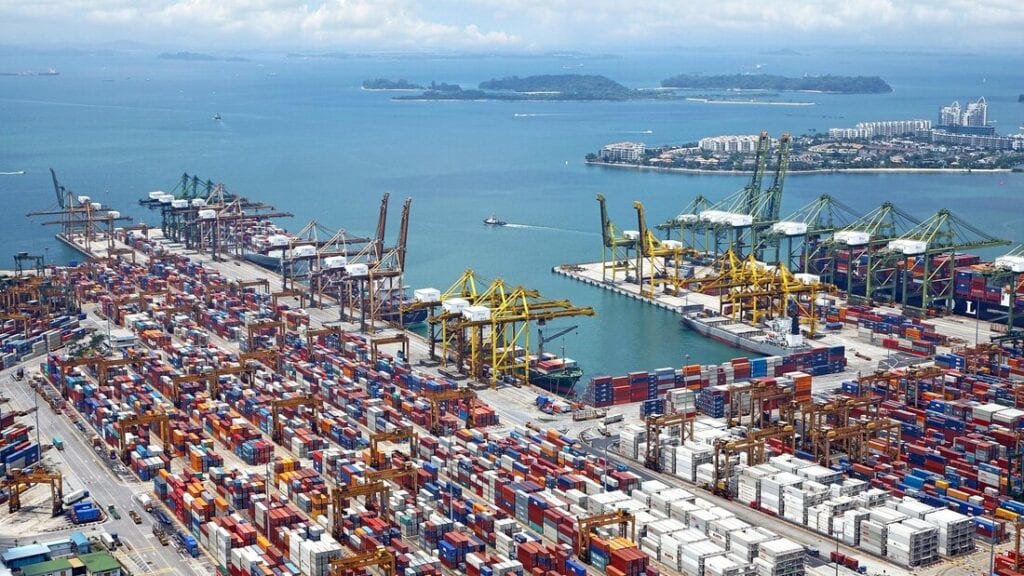If you’re looking for information about imports and exports for Italy, then look no further. We’ll first look at an overview of the economy before turning to its imports and exports as well as the procedure for companies looking to carry out those activities. Italy is the world’s 8th largest economy with a GDP of nearly $2 trillion in 2019. Italy’s GDP grew by 0.3% in 2019.
Introduction about Import and Export
Italy had a total export of €454.7 billion (roughly 549,906,996 in thousands USD given the exchange rates) and a total import of (about 503,581,134 in thousands USD) which lead to a positive trade balance of €46.4 billion. Its trade growth is 1.76% which is around half compared to its world growth of 3.50%. As of 2020 the GDP of Italy is €1,778,800,285,498.67. As a percentage of GDP, Italy’s exports of goods and services is approximately 31.45% and imports of goods and services is around 28.95%.Check out also our article about how to export to Italy: a financial guide to export your products in here.


Imports in Italy
Italy stands eight in rank in total number of imports. As of July 2020 however, imports to Italy dropped 14.2% from a year earlier to €324.84 billion due to intermediate goods, capital goods and energy. Italy imported less from Germany, France, the Netherlands and Spain than previous years while imports from China rose by about 3%.Italy’s biggest imports are fuels (17% of the total imports), motor vehicles and raw materials (each around 10%), chemicals (9%), electronics (8%) and food (7%).
What is the projected forecast for imports?
Imports in Italy are expected to grow despite the global pandemic. In 12 months time, it is estimated that imports in Italy will stand around €272 billion. In the long-term, however, Italian imports are projected to trend around €336 billion in 2021 and €375 billion in 2022.
Import Procedures in Italy
There are certain criteria that Italian companies interested in importing goods into Italy must consider. Because Italy is part of the EU all products imported by companies must comply with both the local and the EU regulations.Certain categories of products, such as food, required special licences that must be obtained. All products must also be accompanied by the documents that state their origins (including the invoice) and be labeled appropriately, i.e. in compliance with EU legislation. If the document is being imported from another EU Member State then the Single Administrative Document must also be provided. Additionally a declaration will need to be presented to the Italian Customs authority along with all documents and licences that were issued for any products that require special licenses.
Exports procedures in Italy
Italy ranks tenth in the world for exports. With respect to 2019, exports fell by around 7.3% in 2020 due to the pandemic (€421.8 billion in July). The affected areas were consumer goods (-3.8 percent) comprising both durables (-4.1%) and non-durables (-3.8%). Capital goods (-5.4%) and intermediate goods (-9.8%) were also heavily hit. Exports declined to Italy’s top trading partners the UK (-9.5%), Germany (-5.3%), France (-6.1 %) and the US (-5.4 %).Italy’s two main exports are precision machinery (18%), metals and metal products (13%). It is also a world renowned exporter of clothing and footwear, motor vehicles, including luxury vehicles, motorcycles and scooters. Italy also exports pharmaceuticals and other chemicals as well as many food products. Approximately 56% of Italy’s products are exported to other European Union countries, mostly Germany, France and Spain, but the United States and Switzerland are also big trading partners with Italy.
What is the projected forecast for exports?
Like the imports previously mentioned, exports in Italy are expected to increase. By the end of the quarter, again according to Trading Economics expectations, Italy should be in the ballpark of €341.1 billion. By the end of the year, Italy is estimated to take a short term drop and to stand around €314 billion, but in the long-term its exports are projected to trend near €344 billion in 2021 and experience a large increase to around €424 billion in 2022.
Export procedures in Italy
The exporting procedures are much the same as the importing procedures. To export goods, Italian companies must obtain export licenses for all the products they intend to send abroad. Companies are required to submit a declaration with all of the information about the goods to be exported, containing information such as the type of product and the amount to be exported, the country it will be sent to, the price and the quantity of goods, where they will be stored, and the exporting company’s information.
Import and export in Italy after COVID 19
Both imports and exports of goods in, from and to Italy can be done by land (road or railroad), by sea or by air. Despite short term losses due to COVID-19, the Italian market is expected to continue growing and to maintain its position as one of the world’s top importers and exporters of goods and services.Check out our video about VAT and distance selling in the video below.
Do you want to read more? Check also our article about income taxes in Italy as well.
If you want to open a business in Italy, consider reading article about freelancing italy.
Do you want to read more? Check also our article about income taxes in Italy as well.
If you want to open a business in Italy, consider reading article about freelancing italy.





Goods can be imported and exported into, from, and out of Italy by land (road or train), sea, or air. Thank you so much!
This article provided a comprehensive overview of what Italy imports, and I’m genuinely thankful for the insights. It’s fascinating to learn about the diverse range of products Italy relies on from global markets. The detailed analysis on agricultural products and technological goods was particularly enlightening. Great read!
Thank you for such an informative piece on what Italy imports. Your in-depth discussion on the economic implications of these imports for Italy’s market was thought-provoking. It’s clear that understanding these import dynamics is crucial for businesses looking to enter the Italian market. I appreciate the thorough research that went into this article.
I’m thankful for the opportunity to read your article on what Italy imports. The detailed breakdown of sectors, including fashion, automotive, and food, provided a clear picture of Italy’s economic dependencies and strengths. Your article is a valuable resource for anyone interested in international trade dynamics.
Your article shed light on the intricate details of what Italy imports, and for that, I’m grateful. The emphasis on how Italy’s import patterns affect its trade balance and economic health was particularly insightful. It’s impressive how the country manages to maintain its heritage while embracing global commerce. Thank you for sharing your knowledge.
I want to express my gratitude for your enlightening article on what Italy imports. Learning about the strategic importance of certain imports in Italy’s economy was fascinating. The visual data and charts helped in understanding the complexities of trade. This article is a testament to the importance of informed journalism in today’s globalized world.